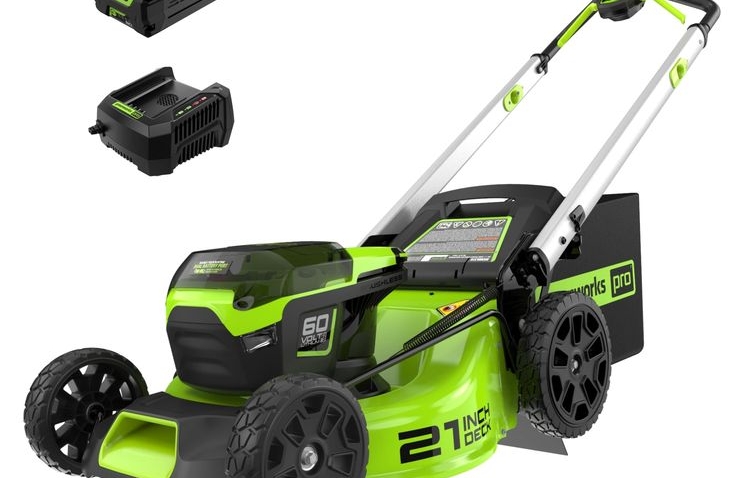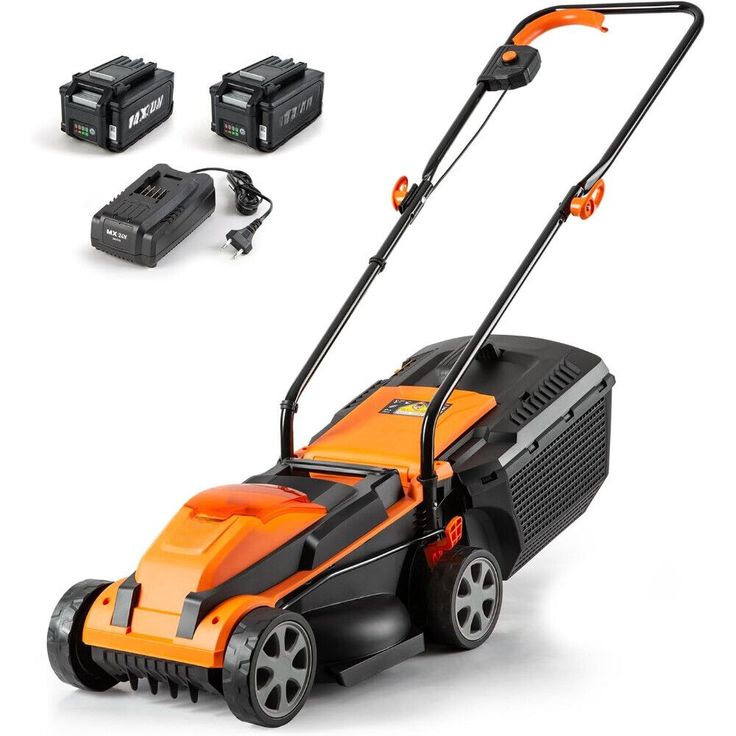
Troubleshooting Guide: Why Won’t My Lawnmower Stay On
Signs Your Lawnmower Needs Attention
Why won’t my lawnmower stay on? Noticing issues with your lawnmower can be frustrating, especially when you’re unsure of the cause. It’s important to recognize early signs that your lawnmower needs attention to avoid more significant problems down the line. Here are a few key indicators that your lawnmower may be in need of a check-up:

- Difficulty Starting: If your lawnmower is hard to start or doesn’t start at all, this could be a sign of underlying issues.
- Unexpected Stopping: A lawnmower that stops unexpectedly during operation may have fuel or air supply problems.
- Uneven Cutting: When the mower leaves uneven patches, it might be a sign of dull blades or misalignment.
- Excessive Vibrations: Unusual shaking or vibrations could indicate loose parts or internal malfunctions.
- Strange Noises: Any sudden or unusual noises during operation are clues that something is not right internally.
By keeping an eye out for these signs, you can identify when your lawnmower requires maintenance or a more thorough inspection. Addressing these issues promptly can help ensure your lawnmower runs efficiently and prolongs its lifespan.
Common Fuel-Related Issues
When we ask ‘why won’t my lawnmower stay on?’, fuel problems often surface as a critical factor. Contaminated or old fuel can significantly hinder your lawnmower’s performance. Here’s how you can address these issues to ensure a smooth operation.
Checking and Replacing Old or Contaminated Fuel
Fuel that sits too long in your lawnmower’s tank can degrade, leading to inefficiency and malfunctions. First, check the state of the fuel. If it looks cloudy or smells off, it’s time to replace it. Drain the old fuel from the tank, taking care to dispose of it properly as per local environmental regulations. Afterward, fill the tank with fresh fuel which can restore the proper function of your lawnmower.
Fuel System Components to Inspect
Apart from the fuel itself, several components of the fuel system should be checked regularly:
- Fuel Filter: This prevents impurities from entering the engine. A clogged filter restricts flow, requiring replacement.
- Carburetor: Ensure there are no deposits or clogs. Use a carburetor cleaner for best results.
- Fuel Lines: These can become brittle or clogged. Inspect them for cracks or blockages and replace if necessary.
- Gas Cap: A vented gas cap can become clogged. Check to ensure it allows air into the tank to prevent vacuum formation.
By taking these steps, you can solve many common issues related to fuel and keep your lawnmower running efficiently.
The Role of Air Filters in Lawnmower Performance
Air filters are crucial for the efficient operation of your lawnmower. These filters catch dust and debris, preventing them from entering the mower’s engine. A clean air filter ensures the engine gets enough air, which is necessary for combustion and keeps the mower running smoothly. Without sufficient air, the lawnmower can overheat or experience reduced power and efficiency.
How to Check and Replace Lawnmower Air Filters
- Locate the Air Filter: Typically, it’s housed in a metal or plastic box near the engine.
- Remove the Cover: Unclip or unscrew to access the filter.
- Inspect the Filter: Look for dirt, oil, or other contaminants. If the filter is paper and dirty, it needs replacement. If it’s a foam filter, check if it can be cleaned.
- Clean or Replace: Wash a reusable foam filter with soap and water, let it dry completely, or replace a paper filter with a new one.
- Reinstall: Place the clean or new filter back and secure the cover.

Understanding Carburetor Problems
Carburetor issues are common in lawnmower complaints. A carburetor mixes air and fuel, crucial for the engine to work. Problems start when it gets clogged or dirty.
Cleaning a Clogged Carburetor
To fix a clogged carburetor, follow these steps:
- Turn off the mower: Ensure your safety first.
- Remove the carburetor: Follow the manual’s instructions.
- Clean the parts: Use carburetor cleaner spray, not water.
- Inspect the ports: Look for sticky residue or clogs.
- Clear fuel lines: Spray them to remove sludge.
- Check the gas cap vent: If it has one, clean any blockages.
After cleaning, reassemble and test your mower.
When to Consider Carburetor Replacement
Sometimes cleaning isn’t enough. Here are signs you might need a new carburetor:
- Persistent issues: If problems continue after cleaning.
- Visible damage: If you see cracks or serious wear.
- Age: Older mowers might need a replacement.
If you’re unsure, consult a professional. They can guide you on whether to clean or replace the carburetor.
The Importance of Engine Choke Adjustment
Adjusting the engine choke is vital for starting your lawnmower, especially in cooler conditions. The choke controls the air-to-fuel ratio, which helps in warming up the engine by enriching the fuel mixture when the engine is cold. As the engine reaches its operating temperature, the choke should be opened to allow sufficient air for normal operation. A properly adjusted choke ensures smooth engine start-up and prevents stalling issues associated with fuel mixture problems.

Recognizing Choke-Related Issues
If you’re wondering ‘why won’t my lawnmower stay on,’ choke-related problems might be the cause. Here are signs to look out for:
- Engine Starts Then Stalls: If the mower starts but soon stops, the choke may not be opening properly.
- Excessive Fuel Smell: A rich fuel mixture can cause a strong odor. Check if the choke is stuck closed.
- Flooding Engine: Over-choking can flood the engine with fuel, leading to difficulty starting.
- High Fuel Consumption: If the lawnmower uses more fuel than normal, a choke issue may exist.
By recognizing these issues, you can adjust or fix the choke to maintain a steady running lawnmower.
Dealing with Spark Plug Complications
Spark plug issues often underlie why a lawnmower fails to stay on. A faulty or dirty spark plug may misfire, impeding the mower’s operation. Recognizing this is crucial to maintaining lawn mower efficiency.
Steps to Clean or Replace Faulty Spark Plugs
- Locate the Spark Plug: Typically found at the front of a push lawn mower, connected by a black cable.
- Remove the Spark Plug: Use a socket wrench to carefully remove the spark plug.
- Inspect for Dirt or Damage: Check if the spark plug is clogged with oil or dirt. Look for dark, sticky carbon deposits.
- Clean or Replace: Clean the spark plug with a wire brush and brake cleaner if slightly dirty. Replace it if heavily contaminated or damaged.
- Reinstall or Replace: After cleaning, securely reinstall the cleaned spark plug. If replacing, ensure the new spark plug is compatible and install it firmly.
- Test Your Mower: Start your lawnmower to check if the issue is resolved.
Following these steps can help restore your lawnmower’s performance and prevent it from suddenly stopping. Regular checking and maintenance of spark plugs are advisable to avoid recurrent issues.
Regular Maintenance to Prevent Future Issues
To stop your lawnmower from failing, regular maintenance is key. Simple, routine checks can prevent most issues. Keep to a schedule to ensure your mower’s longevity and efficiency. For example, changing the oil, sharpening blades, and cleaning the unit thoroughly are all crucial.
Essential Lawnmower Tune-Up Practices
Why won’t my lawnmower stay on? Here are tune-up practices necessary for a healthy mower:
- Change the Oil: Old oil can harm the engine. Replace it annually or as per the manual.
- Sharpen Blades: Dull blades rip grass, not cut. Sharpen them for a clean, healthy lawn.
- Check Belts: Worn belts can break. Inspect and replace them to prevent unexpected stops.
- Clean Undercarriage: Grass clumps under your mower can block discharge. Clean it to avoid clogs.
- Tighten Bolts and Screws: Vibration can loosen them. Tighten to prevent parts from falling off.
By following these steps, ‘why won’t my lawnmower stay on’ will be a question of the past. Preventative care saves time and money from future repairs. Make maintenance a habit to enjoy uninterrupted lawn care for seasons to come.












Leave a Reply